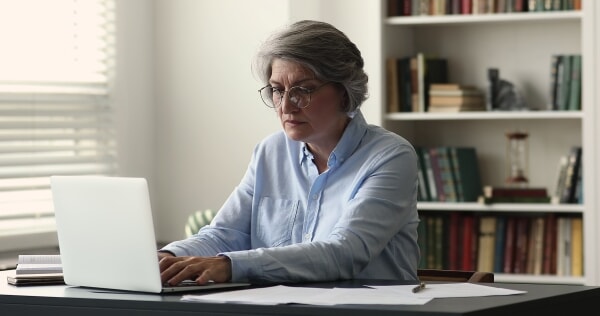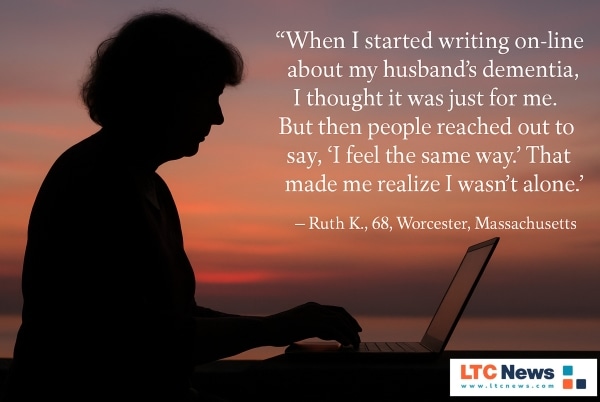Starting a Caregiving Blog with Zero Tech Skills - Easing the Stress of Family Caregiving

Family caregiving often begins suddenly. A parent's fall, a spouse's diagnosis, or a relative's gradual decline can put you into a role you never expected. Along with the daily responsibilities comes an emotional weight that's hard to put into words.
The AARP and the National Alliance for Caregiving report that a record 63 million Americans are now serving as unpaid family caregivers. Many of these family caregivers were unprepared as their families faced a crisis when they discovered that health insurance, including Medicare, doesn't pay for long-term care services outside of short-term skilled care.
Many family members find themselves becoming caregivers because their loved ones lack Long-Term Care Insurance to cover the rising cost of professional care. The burden and anxiety can be overwhelming, yet some discover that sharing their experiences—often shaped by years of chronic stress—helps ease their own struggles and provides guidance to others facing the same challenges.
For many, writing provides a release. Putting experiences into a blog or on-line journal helps caregivers process emotions, step back from the daily grind, and sometimes find patterns or meaning they hadn't noticed. Just as important, sharing these stories connects families with others facing similar struggles.

Share your thoughts and experiences about aging, caregiving, health, and long-term care with LTC News —Contact LTC News.
Share Your Family's Story On-line—Ease the Stress of Caregiving
A caregiving blog can serve many purposes, depending on the needs of your family:
- Keeping relatives informed without repeating the same medical updates dozens of times.
- Creating a private outlet for stress and emotions you may not share in conversation.
- Building community with others who understand the realities of caregiving.
- Preserving a legacy of your loved one's life and your family's journey for future generations.
- Raising awareness about conditions such as Alzheimer's, Parkinson's, or cancer, and helping others learn from your experience.
Some caregivers choose to keep their blog private, accessible only to family and friends. Others make their writing public, offering guidance, encouragement, or simply solidarity to strangers who stumble across their words.
Technology Removes the Barriers
For years, building a website meant learning technical terms—domains, servers, databases—that created more frustration than relief. That's changing. Hosting providers and website platforms have increasingly focused on simplicity, with tools designed for people who have no technical background at all.
Today, a caregiver, or anyone who has never built a website, can often get a personal blog running in less than an hour.
- AI-driven builders create a site after asking just a few questions.
- WordPress installers now take only a few clicks instead of long setup processes.
- Security and backups are handled automatically, so you don't need to worry about losing your writing.
- Support teams are trained to guide beginners patiently, whether through live chat or phone calls.
These changes mean you don't need to be "tech savvy" to share your caregiving journey on-line.
A Look at One Leading Example
Among the companies leading this shift is GreenGeeks, a web host known both for its beginner-friendly approach and for its environmental commitment. While many hosts still overwhelm users with complex dashboards, GreenGeeks has emphasized simplicity.
- New users sign up through a straightforward form, with optional add-ons clearly explained.
- After login, the dashboard directs beginners to just two big buttons: "Install WordPress" or "Launch AI Website Builder."
- The AI builder asks about your site's purpose—such as a family blog or caregiving journal—and creates a complete starter site instantly, with design and placeholder text ready to be personalized.
For caregivers who may be stretched thin with responsibilities, this type of technology reduces the barrier to entry. Instead of spending hours learning software, you can start writing almost immediately.
Content That Matters Most to Families
What goes on a caregiving blog? Families use them in many ways:
- Health updates: Share treatment progress, doctor visits, or changes in daily routines.
- Personal reflections: Record your own thoughts and emotions as you navigate caregiving.
- Practical tips: Offer what has worked for you—everything from medication reminders to calming techniques for dementia patients.
- Memories and photos: Preserve stories, recipes, or family traditions that might otherwise be lost.
- Resources: Link to community programs, long-term care planning tools, or caregiver directories such as the LTC News Caregiver Directory so other families can find respite care or, if needed, professional caregivers on a more regular basis.
The act of writing these entries not only informs others—it can also help the writer regain a sense of control. Seeing your experiences laid out in words provides perspective and often reveals just how much you're accomplishing day after day.
Support That Meets You Where You Are
Even with easier tools, questions will come up: What's a plugin? How do I reset my password? That's where responsive support becomes crucial.
WordPress site owners with “zero tech skills” often need support that goes beyond quick-fix commands or copy-pasted guides. The support system at GreenGeeks uses three layers that cater to total newcomers.
GreenGeeks and other beginner-friendly hosts provide 24/7 live chat and phone support, often with screen-share so agents can handle technical steps on your behalf. Knowledge bases are written in plain language with screenshots and short videos, avoiding jargon.
For caregivers who already feel overwhelmed, this kind of help can make the difference between giving up in frustration or keeping a blog going.
A Greener Digital Legacy
One unique element of GreenGeeks is its eco-friendly approach. For every unit of energy consumed, the company funds three units of renewable energy. It also plants a tree for every hosting account. For families thinking not just about caregiving today but also about the world they'll leave to children and grandchildren, this kind of environmental responsibility can be meaningful.
Why Now is the Time
Caregiving is hard, and the emotional burden is real. Journaling or blogging on-line won’t solve the daily challenges, but it can ease stress, preserve memories, and connect you with others who truly understand.
A caregiving blog can serve not only as a personal lifeline and a family resource. Your words may also resonate with someone you’ve never met, creating solidarity in a shared struggle.
There are already many powerful examples of caregivers who have turned to blogging as a way to cope and connect:
- The Caregiver Space Blog — features personal stories from caregivers around the world, covering everything from emotional burnout to end-of-life experiences.
- The Dementia Diary — one daughter’s ongoing reflections about caring for her mother, blending humor, grief, and practical insights.
- CaringBridge.org — while not a traditional blog host, thousands of families use it as a platform to share health updates, daily struggles, and victories during long-term illnesses.
- Alzheimer’s Reading Room (founded by caregiver Bob DeMarco) — combines personal stories with resources, building one of the largest on-line Alzheimer’s caregiving communities.
What these examples show is that the simple act of sharing—whether in long reflective posts, quick daily updates, or even photo journals—creates a powerful support system.
Thanks to technology designed for beginners, starting a caregiving blog no longer requires technical skills. With platforms like WordPress, supported by hosts such as GreenGeeks and other beginner-friendly providers, you can create a space that not only documents your caregiving journey but also builds a community around it.
In some cases, after their experience as a caregiver, some family caregivers start home health agencies of their own, using the same resources they learned for their blog for their business.
In either case, for many families, that digital space becomes part of their lasting legacy—something future generations can look back on and learn from.


